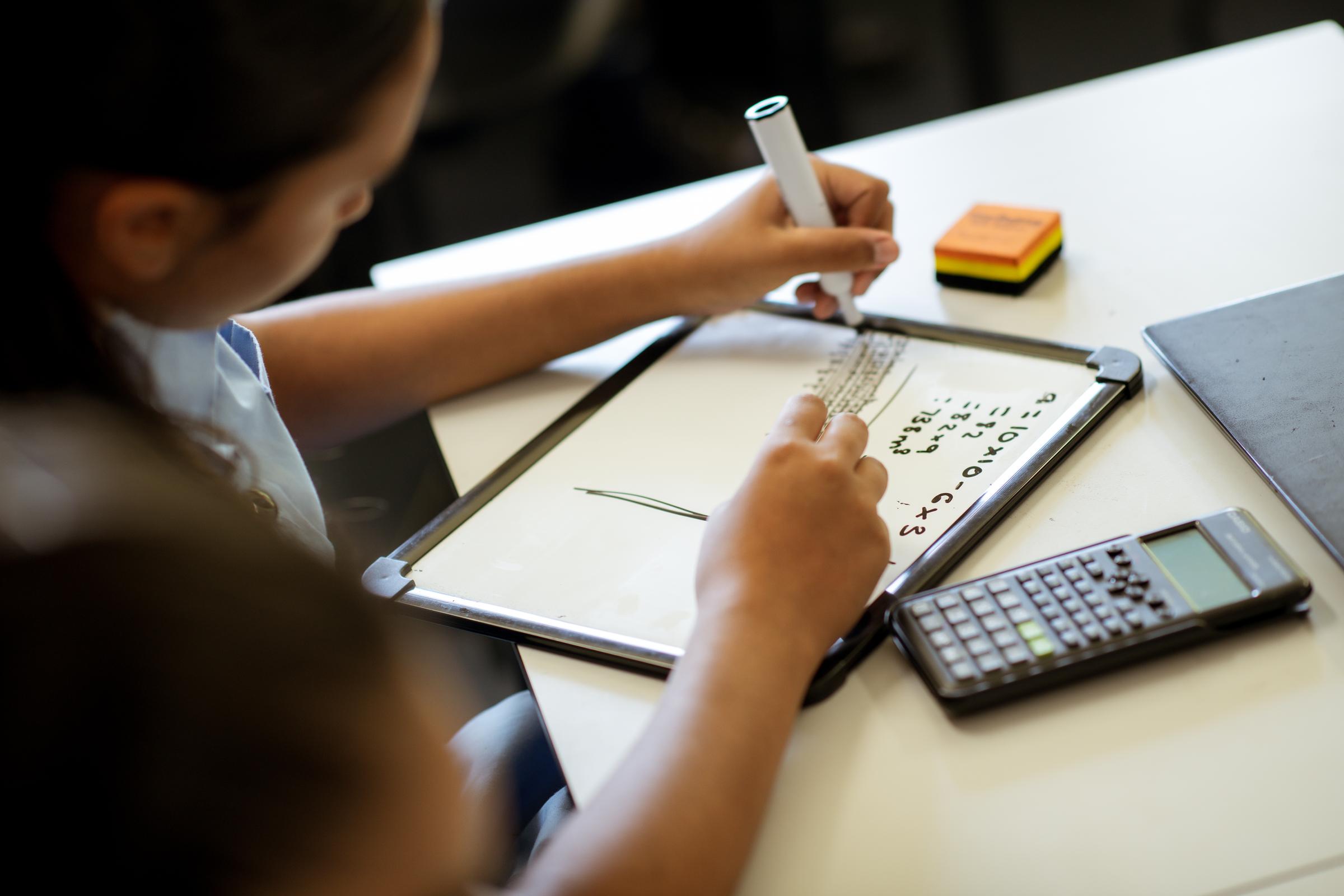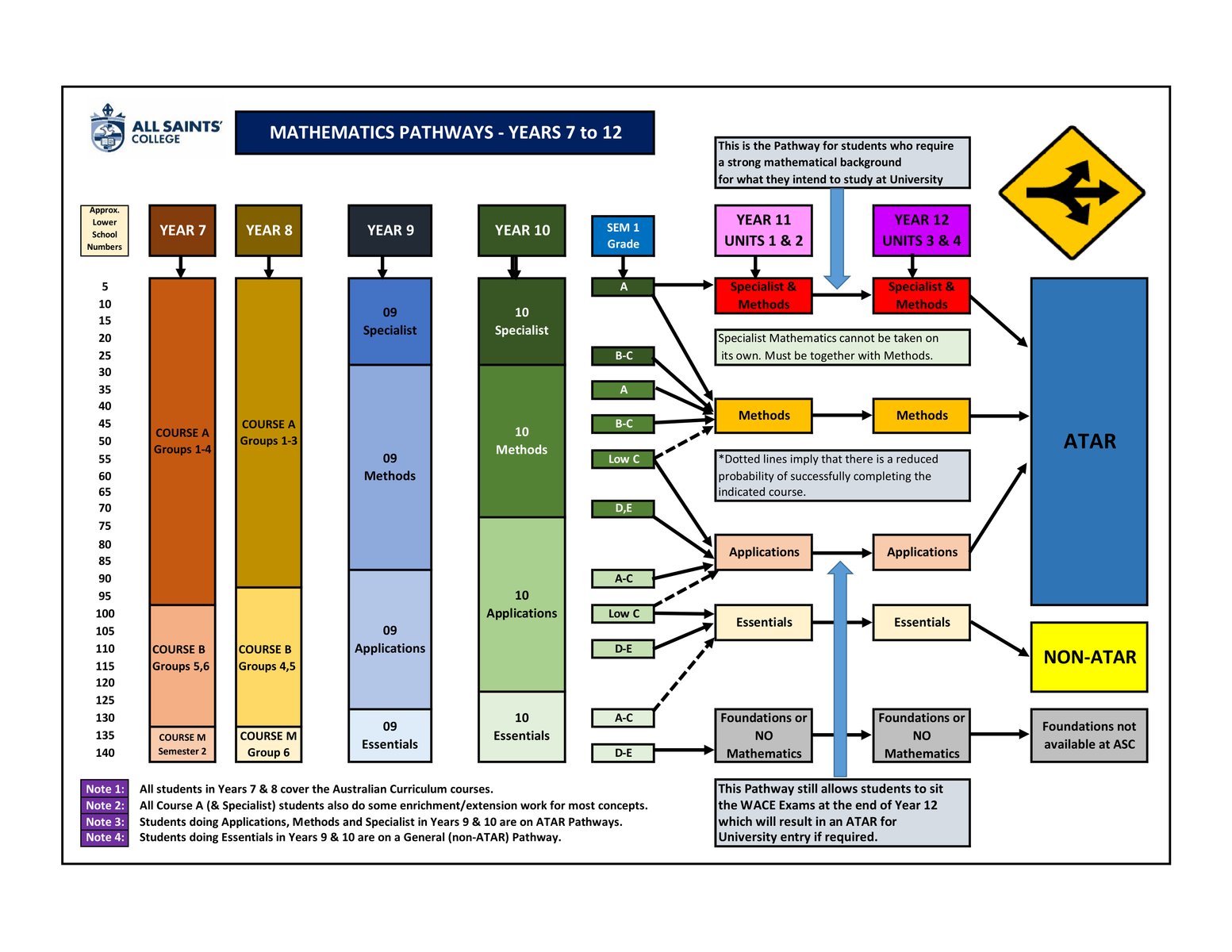YEAR 9 COMPULSORY MESH OPTIONS

MATHEMATICS LEARNING AREA
Learning mathematics is fundamental to both personal development and future success. It equips students with essential skills that are not only useful in everyday life—such as budgeting, measuring, and interpreting data—but also vital across a wide range of careers, from engineering and finance to health sciences and technology.
Mathematics fosters logical reasoning and structured thinking, helping students approach problems methodically and make sound, evidence-based decisions. These problem-solving abilities extend beyond the classroom, enabling students to tackle real-world challenges with confidence and clarity.
By developing critical thinking, analytical skills, and perseverance, mathematics empowers students to become thoughtful, informed, and capable individuals prepared to navigate an increasingly complex world.
By the end of the year, students will:
- Understand and use mathematical concepts to solve real-world problems.
- Compare and order numbers, including scientific notation.
- Use efficient strategies for addition, subtraction, multiplication, and division.
- Apply algebraic rules to simplify expressions and solve equations.
- Graph straight lines and solve simple quadratic equations.
- Calculate interest, income, perimeter, area, volume, and surface area.
- Use properties of triangles and similar figures to find unknown sides and angles.
- Conduct probability experiments and analyze data using statistical methods.
- Apply this knowledge and their skills to model situations in real life and investigate solutions.
Courses: In Year 9, students will complete the Western Australian curriculum. They can also choose from four main pathways based on their performance in Year 8.
- 9 Essentials: Least challenging, not suitable for ATAR students.
- 9 Applications: For students aiming for university courses that do not require a strong mathematics background.
- 9 Methods: For capable students aiming for university courses requiring higher mathematics.
- 9 Specialist: For highly capable mathematics students, covering the same content as Methods but with some extension.
- 10 Specialist: a select few students who have successfully completed the Year 9 curriculum in Year 8 will be able to progress to Year 10.
To view a larger image of the Mathematics Pathways flowchart, please click HERE.
ENGLISH LEARNING AREA
In Year 9 English, students engage with a variety of text types and continue to develop their skills across the three learning objectives: Language, Literature and Literacy.
The text types include fiction such as poetry, short stories and novels, and non-fiction such as current affairs and news programs on television. Our students develop their comprehension skills and analytical skills by responding to these texts, and then apply what they have learned when they create their own texts to suit their specific purposes and target audiences. Students write in a variety of forms such as essays, poems and narratives. Each term students will complete a variety of oral and written tasks to assess their understanding of texts and the English Outcomes.
There are three options for studying English in Year 9:
- English Empowerment (for students who require additional support in English)
- English Engagement (for most students)
- English Enhancement (for students invited to be part of the Extension program)
SCIENCE LEARNING AREA
The Year 9 Science course is structured around the four sub-strands of Science Understanding, delivered as term-long units of study:
- Chemical Sciences – Investigating atomic structure, including atomic and mass numbers, isotopes, and the organisation of elements in the periodic table. Students explore how compounds are formed, write chemical formulas, and construct word and balanced chemical equations, applying the law of conservation of mass.
- Biological Sciences – Examining structural, behavioural, and physiological adaptations in plants and animals. Students investigate how organisms respond to environmental changes and how abiotic and biotic factors influence population size and species diversity. Sampling techniques and ecological monitoring are also introduced.
- Physical Sciences – Exploring the properties and behaviours of sound as a longitudinal wave and light as an electromagnetic wave.
- Earth and Space Sciences – Analysing global systems, including the carbon and water cycles, and interpreting how changes in these systems can explain patterns of climate change.
Throughout the year, Science Inquiry Skills— including questioning and hypothesising; planning and conducting; processing, modelling and analysing data; communicating; and collaborating—are authentically embedded in all learning experiences.
HUMANITIES AND SOCIAL SCIENCE LEARNING AREA
Students in Year 9 will cover the four key disciplines of Humanities and Social Sciences (HASS):
- Civics and Citizenship
- Economics and Business
- Geography
- History
The units of study are based upon the Western Australian Curriculum. All subjects are given equal importance in the curriculum and integrate the inquiry process, skills and the general capabilities. Students learn in non-streamed (heterogeneous) classes.
Civics and Citizenship investigates what is ‘Shaping Voter Decisions’ and the ‘Australian Court System’, Economics and Business considers 'Australia and the Global Community' and how businesses seek ‘Opportunities, Risks and Rewards’, Geography explores 'Biomes and Food Security' and 'Geographies of Interconnectedness' whilst, History investigates ‘Australian History (1750 – 1914)’ and World War Two.
